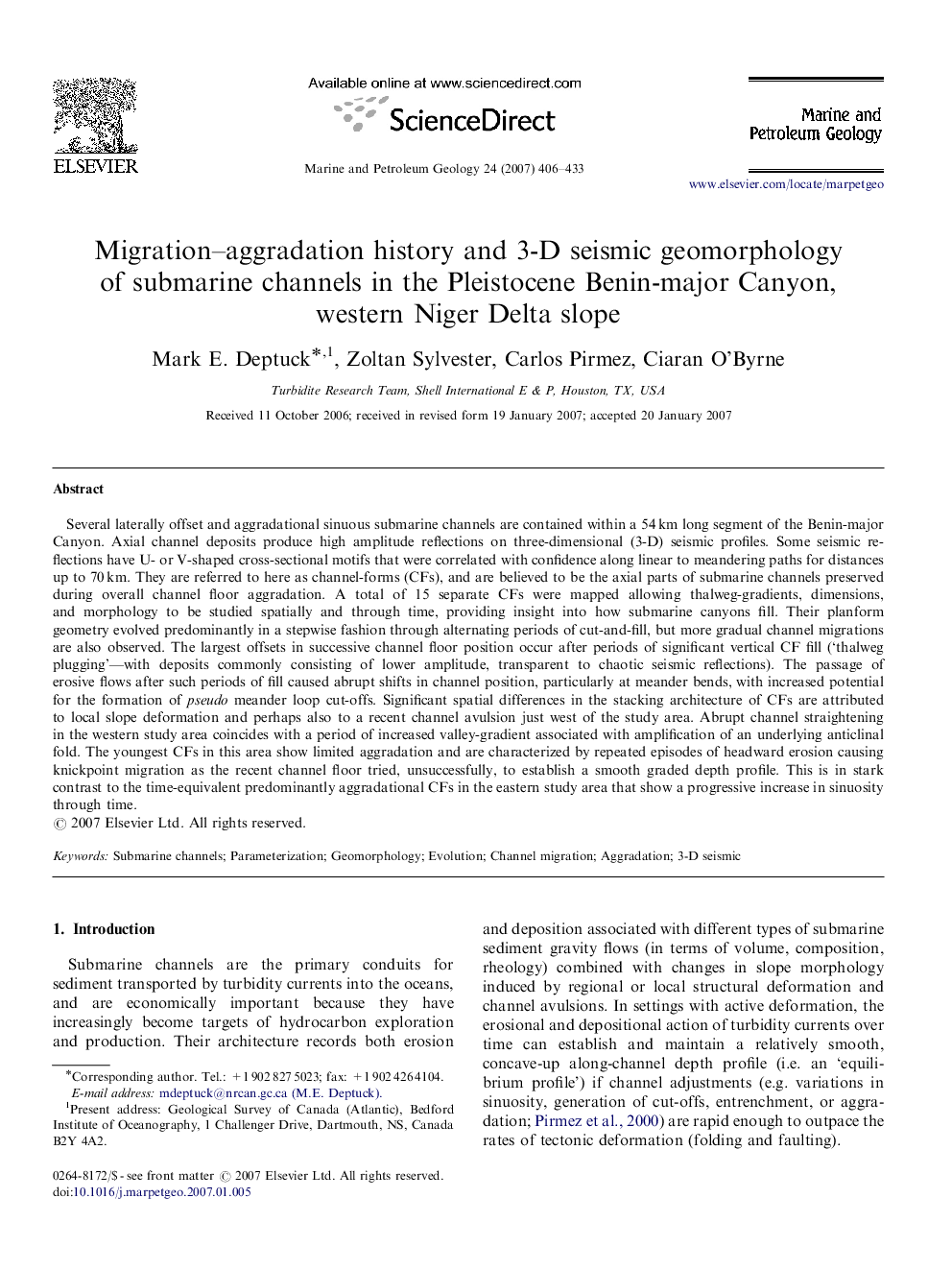| کد مقاله | کد نشریه | سال انتشار | مقاله انگلیسی | نسخه تمام متن |
|---|---|---|---|---|
| 4696481 | 1637187 | 2007 | 28 صفحه PDF | دانلود رایگان |

Several laterally offset and aggradational sinuous submarine channels are contained within a 54 km long segment of the Benin-major Canyon. Axial channel deposits produce high amplitude reflections on three-dimensional (3-D) seismic profiles. Some seismic reflections have U- or V-shaped cross-sectional motifs that were correlated with confidence along linear to meandering paths for distances up to 70 km. They are referred to here as channel-forms (CFs), and are believed to be the axial parts of submarine channels preserved during overall channel floor aggradation. A total of 15 separate CFs were mapped allowing thalweg-gradients, dimensions, and morphology to be studied spatially and through time, providing insight into how submarine canyons fill. Their planform geometry evolved predominantly in a stepwise fashion through alternating periods of cut-and-fill, but more gradual channel migrations are also observed. The largest offsets in successive channel floor position occur after periods of significant vertical CF fill (‘thalweg plugging’—with deposits commonly consisting of lower amplitude, transparent to chaotic seismic reflections). The passage of erosive flows after such periods of fill caused abrupt shifts in channel position, particularly at meander bends, with increased potential for the formation of pseudo meander loop cut-offs. Significant spatial differences in the stacking architecture of CFs are attributed to local slope deformation and perhaps also to a recent channel avulsion just west of the study area. Abrupt channel straightening in the western study area coincides with a period of increased valley-gradient associated with amplification of an underlying anticlinal fold. The youngest CFs in this area show limited aggradation and are characterized by repeated episodes of headward erosion causing knickpoint migration as the recent channel floor tried, unsuccessfully, to establish a smooth graded depth profile. This is in stark contrast to the time-equivalent predominantly aggradational CFs in the eastern study area that show a progressive increase in sinuosity through time.
Journal: Marine and Petroleum Geology - Volume 24, Issues 6–9, June–November 2007, Pages 406–433